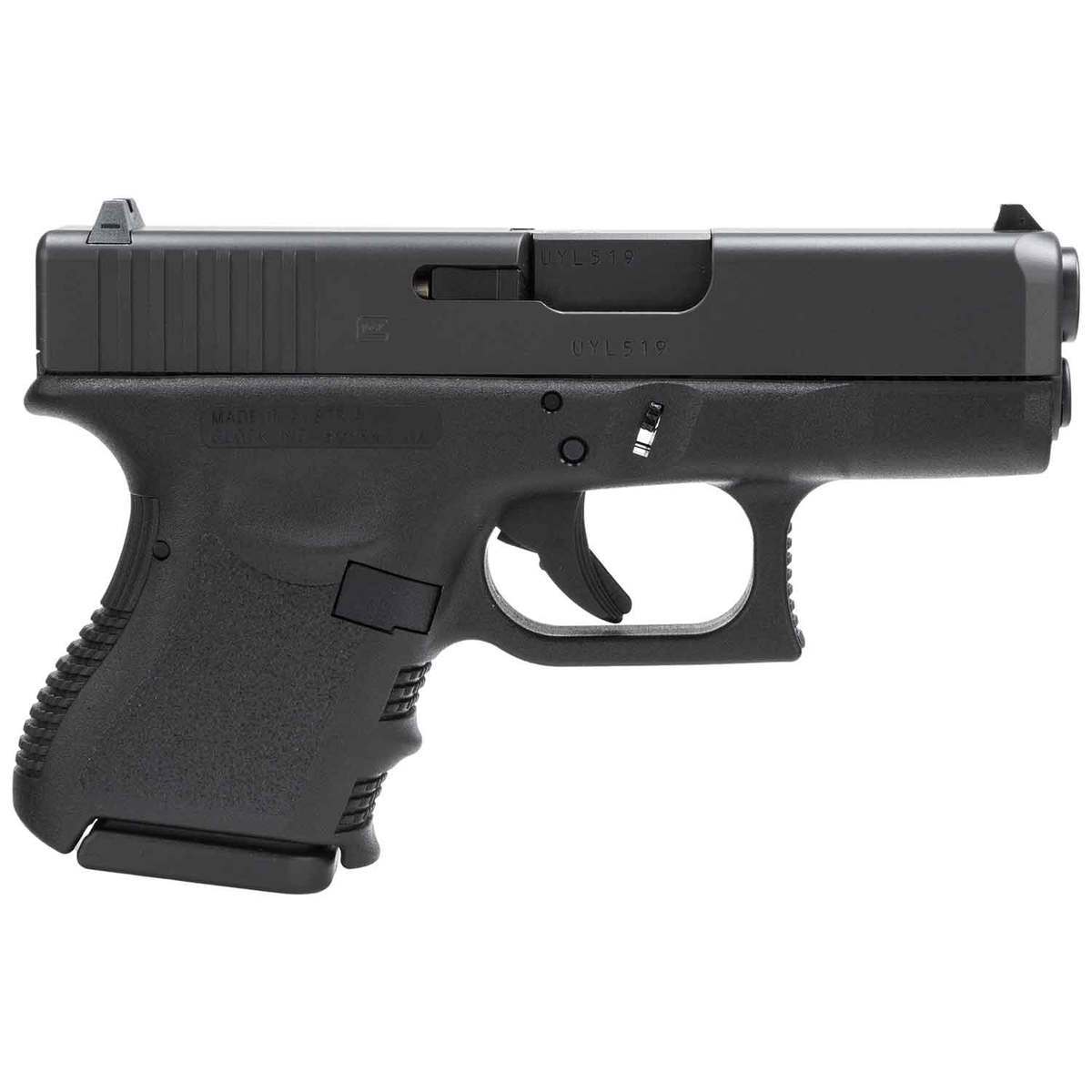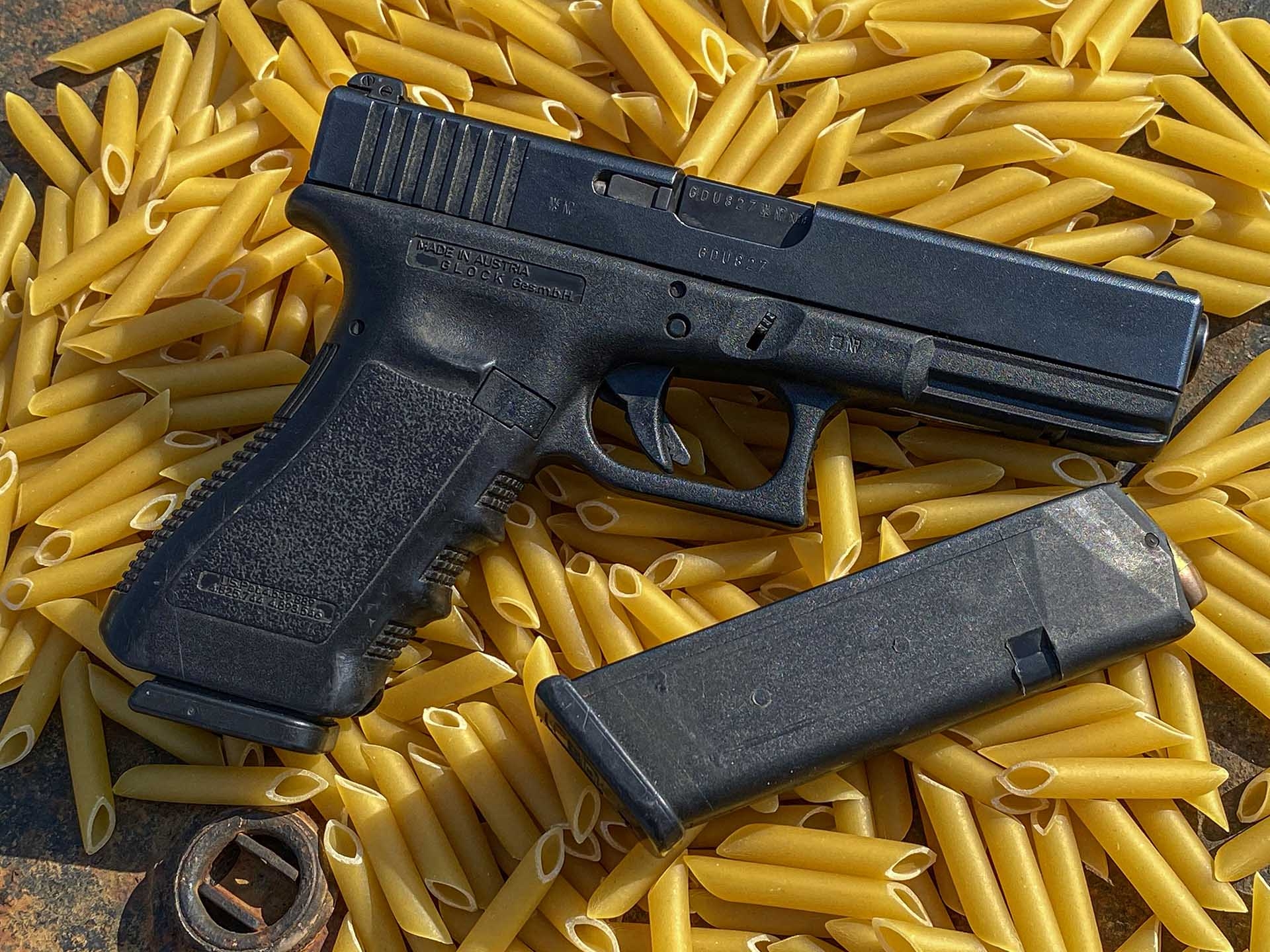Glock 40 Ammo - Most competitive shooters need to load their own OAL ammo, but we offer a factory-built option for your 2011 platform pistol. Using our metal-coated bullets and a meticulously remanufactured case, this ammunition is ready to meet your every challenge. the needs of a serious shooter.
NOTICE: Does NOT fit Glock, Springfield, S&W or other similar sized handgun magazines. Designed for use in larger magazines and specific platforms such as: Caspian wide body, Para or 2011 STI. All ammo sales are final, we will not refund your purchase if this ammo does not fit your firearm.
Glock 40 Ammo

The FMJ Precision Delta 180-grain bullet is a great choice for any 40 S&W or 10mm manual magazine. Made with a molded lead core with a copper coating, our FMJ balls are renowned for their...
Handgun Self Defense Ammunition
Utilizing our precision-crafted jacketed bullets in combination with meticulously inspected and processed once-fired cases, we are able to deliver high-quality training ammunition without breaking the bank…
Utilizing our precision-crafted jacketed bullets in combination with meticulously inspected and back-fired cases, we are able to deliver high-quality training ammunition without breaking the...
A perfect ammunition for practice. We use our own molded lead bullet in a case that has undergone a meticulous remanufacturing process. This ammunition is designed for PPC pistols...
When second chances aren't an option, shooters turn to Precision Delta PDP Pro ammunition. Utilizing a Precision Delta shaped lead bullet, matched with new brass and clean flaming powder,…
Bullet Setback Fears
Utilizing our precision manufactured jacketed bullets in combination with meticulously inspected and fired shell cases, we are able to provide you with high quality training ammunition at a fantastic price…
When second chances aren't an option, shooters turn to Precision Delta PDP Pro ammunition. Using a Precision Delta bullet, new match-grade brass, and our own fiery powder...the .40 S&W is a no-nonsense pistol cartridge. frame developed jointly by American firearms manufacturers Smith & Wesson and Winchester in 1990.
The .40 S&W was developed as a law enforcement cartridge designed to copy the performance of the Federal Bureau of Investigation (FBI) 10mm reduced-velocity automatic cartridge that could be retrofitted into mid-frame semi-automatic pistols (9mm size ). It uses 0.40 in (10 mm) diameter bullets ranging in weight from 105 to 200 grains (6.8 to 13.0 g).

This section requires additional citations for verification. Please help us improve this article by adding citations from reliable sources. Unsupplied material may be objected to and removed. Find source: ".40 S&W" – news magazine book scholar JSTOR (August 2021) (Learn how and what to remove this message template)
Mhs Glock To Come To Market: Glock Mhs And Barrier Blind 9mm Ammunition Reviewed By European Security & Defence Magazine The Firearm Blog
After the 1986 Miami FBI shooting, in which two FBI special agents were killed and five wounded, the FBI began testing 9×19mm Parabellum and .45 ACP ammunition in preparation for replacing its standard revolver with a seed. - automatic pistol.
The semi-automatic pistol offered two advantages over the revolver: greater ammunition capacity and easier reloading during a firefight. The FBI was pleased with the performance of the .38 Special +P 158 gr (10.2 g) semi-wadcutter hollow point lead cartridge (LSWCHP) ("FBI Charge") based on decades of reliable performance. Ammunition for the new semi-automatic pistol was required to deliver terminal performance equal to or better than the FBI's .38 Special load. The FBI developed a practice test series that featured eight tests that reasonably repressed the types of situations FBI agents often encountered in shooting incidents.
While testing 9×19mm and .45 ACP ammunition, FBI Firearms Training Unit Chief John Hall decided to put the 10mm Auto cartridge through its paces, giving his Colt Delta Elite semi-auto from 10 mm and hand personally. - load ammunition. FBI tests revealed that a 170–180 g (11.0–11.7 g) 10mm JHP round, launched at 900–1,000 ft/s (270–300 m/s), achieved desired terminal performance without the high recoil associated with the conversion. 10 mm ammunition (1,300-1,400 ft/s (400-430 m/s)). The FBI contacted Smith & Wesson and asked them to design a firearm to FBI specifications, based on the current large-frame Smith & Wesson Model 4506 .45 ACP, that would perform well with the velocity reduction of the FBI 10mm Ammunition During this collaboration with the FBI, S&W realized that reducing the full power of 10mm to meet FBI average velocity specifications meant less powder and more airspace in the case. They found that by removing the airspace, they could shorten the 10mm cartridge case to fit the medium frame 9mm pistol and load it with a 180 gr (11.7 g) JHP bullet to produce ballistic performance identical to the 10mm. S&W th partnered with Winchester to produce a new cartridge, the .40 S&W. It uses a small trigger gun while the 10mm cartridge uses a large trigger gun.
The .40 S&W cartridge debuted on January 17, 1990, along with the new Smith & Wesson Model 4006 pistol, although it was several months before the pistols were available for purchase. Austrian manufacturer Glock Ges.m.b.H. they were commercially available before Smith & Wesson in 1990, with pistols chambered in .40 S&W (Glock 22 and Glock 23) announced a week before the 4006.
Glock 23 .40 S&w + Holster, Mags, And 50 Rounds Of Ammo
The rapid introduction of the Glock was aided by its design of a handgun chambered in 10mm Auto, the Glock 20, only a short time before. Since the .40 S&W uses the same bore and case diameter as the 10mm Auto, it was simply a matter of adapting the 10mm design to the shorter 9×19mm Parabellum frames. The new guns and ammunition were an instant hit,
And pistols of the new caliber were adopted by several law enforcement agencies across the nation, including the FBI, which adopted the Glock pistol in .40 S&W in May 1997.
The .40 S&W's popularity increased with the passage of the now-expired Federal Assault Weapons Ban of 1994 which prohibited the sale of handgun or rifle magazines that could hold more than t cartridges, regardless of caliber. Several US states and a number of local governments have banned or regulated so-called "high-capacity" magazines. As a result, many new firearms buyers limited to purchasing handguns with a maximum magazine capacity of 10 rounds have chosen handguns chambered in .40 S&W instead of smaller diameter cartridges such as 9x19mm (9mm Luger or 9mm Parabellum).

Case length in the .40 S&W and overall cartridge length are reduced, but other dimensions, with the exception of the case core and wall thickness, remain identical to those of the 10mm Auto. Both cartridges headspace on the case mouth. So in a semi-automatic they cannot be replaced. Fired from a 10mm semi-auto, the .40 Smith & Wesson cartridge will make room in the extractor and the bullet will jump 0.142 inch (3.6 mm) just like a .38 Special fired from a .357 Magnum revolver. If the cartridge is not held by the extractor, the chances of a broken primer are high.
Glock 23 Gen5 .40 S&w, 4.02\
Smith & Wesson manufactures a double-action revolver (the Model 610) capable of firing both cartridges through the use of a moon clip. A single-action revolver chambered in .38–40 can also fire .40 or 10mm when fitted with the correct size cylinder. Some .40 caliber handguns can be converted to 9mm with a specially designed barrel, magazine swap, and other parts.
The common twist rate for this cartridge is 406 millimeters (16.0 in), 6-flute, ground ∅ = 9.91; mm, groove ∅ = 10.17 mm, land width = 3.05 mm and the trigger type is small pistol.
According to the official C.I.P. guidelines, the .40 S&W case can handle up to 225 megapascals (32,600 psi) of piezoelectric pressure. In C.I.P. regulated countries, every pistol/cartridge combination must be proofed to 130% of the maximum C.I.P. pressure to certify to sell to consumers. The SAAMI pressure limit for the .40 S&W is set at 241.32 megapascals (35,001 psi) of piezo pressure.
An expanded hollow point bullet (Winchester SXT "Black Talon", left) and an unfired .40 S&W hollow point cartridge (Speer Gold Dot, right)
Is The .40 Calibre Smith & Wesson Caliber Really Dead?
The .40 S&W cartridge has been popular with law enforcement agencies in the United States, Canada, Australia and Brazil. While possessing nearly identical accuracy,
Marshall & Sanow (and other hydrostatic shock raters) argue that with good jacketed hollow point bullets, the most ergetic loads for the .40 S&W can also create hydrostatic shocks to living human-sized targets.
Based on the ideal terminal ballistic performance of gelatin ordnance during laboratory tests in the late 1980s and early 1990s, the .40 S&W has earned the status of "the ideal cartridge for personal defense and law enforcement".

Ballistically the .40 S&W is nearly identical to the .38-40 Winchester introduced in 1874, as they share the same diameter and bullet weight and have the same muzzle velocity.
Cci Blazer Brass 40 S&w Ammo 180 Grain Fmj 50 Rds
The energy of the .40 S&W exceeds the pressure of the standard .45 ACP loading, which increases between 350 foot-pounds (470 J) and 500 foot-pounds (680 J) of energy, depending on bullet weight. Both the .40 S&W and 9mm Parabellum operate at a SAAMI maximum of 35,000 pounds per square inch (240 MPa), compared to a maximum of 21,000 pounds per square inch (140 MPa) for the .45 ACP.
The .40 S&W pistol with a standard double-stack (non-extended) magazine holds up to 16 rounds. While not a replacement for the 9mm Parabellum, the .40 S&W is frequently used in law enforcement
Glock 40 frame, glock 40 10mm holster, glock 40 cabela's, glock 40 10mm review, glock 40 mos review, 40 mm glock, glock 40 mos holster, 40 mm ammo can, automatic glock 40, best glock 40, glock 40 specs, 40 cal ammo box